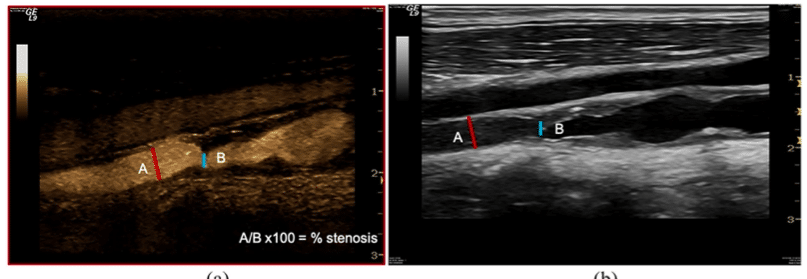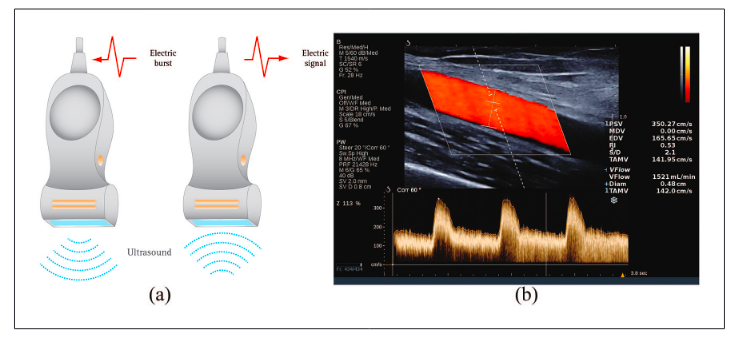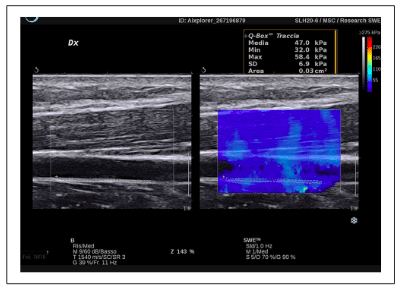
Ultrasound evaluation of access complications: Thrombosis, aneurysms, pseudoaneurysms and infections
Mario Meola , Antonio Marciello , Gianfranco Di Salle and Ilaria Petrucci
Abstract
JVA The Journal of Vascular Access
Arteriovenous fistula (AVF) complications are classified based on fistula outcomes. This review aims to update colour Doppler (CD) and pulse wave Doppler (PWD) roles in managing early and late complications of the native and prosthetic AVF. Vascular access (VA) failure occurs because inflow or outflow stenosis activates Wirchow’s triad inducing thrombosis. Therefore, the diagnosis of the tributary artery and outgoing vein stenosis will be the first topic considered. Post-implantation complications occur from the inability to achieve AVF maturation and dialysis suitability due to inflow/ outflow stenosis. Late stenosis is usually a sequence of early defects repaired to maintain patency. Less frequently, in the mature AVF or graft, complications are acquired ‘de novo’. They derive either from incorrect management of vascular access (haematoma, pseudoaneurysm, prosthesis infection) or wall pathologies (aneurysm, myxoid valve degeneration, kinking, coiling, abnormal dilation from defects of elastic structures). High-resolution transducers (10–20MHz) allow the characterization of the wall damage, haemodynamic dysfunctions, early and late complications even if phlebography remains the gold standard for the diagnosis for its sensitivity and specificity.
Keywords
AVF complications, inflow/outflow stenosis, fistula aneurysm, pseudoaneurysm, vascular access thrombosis, doppler imaging
Date received: 7 April 2021; accepted: 14 April 2021
Introduction
Based on the outcomes, AVF complications can be classi- fied as early and late events. Primary patency is the most favourable clinical outcome in which the AVF provides an adequate flow for haemodialysis without any intervention.1,2 Assisted primary patency is the time interval between VA creation and the first occlusion (thrombosis-free VA sur- vival) or patency measurement, including operative/endo- vascular interventions to maintain the VA. Secondary patency is the access survival until abandonment, that is, the time interval from access placement and abandonment, including all interventions to re-establish the haemodialysis suitability. Immediate failure of AVF occurs when the blood flow rate in the fistula circuit is inadequate due to poor con- dition of the vessels or surgical errors. Primary failure is the permanent AVF failure before it is suitable for haemodialy- sis. It occurs within 3months of AVF implantation due to
insufficient inflow or inappropriate remodelling of the incoming artery or outgoing vein. Secondary failure is the permanent failure and subsequent abandonment of an AVF that has reached dialysis suitability criteria.3,4
Early failure derives both from pre-existing or acquired anatomical anomalies and haemodynamic dysfunction
1Institute of Life Sciences-Sant’Anna School of Advanced Studies; Department of Internal Medicine University of Pisa- Pisa, Italy
2Nephrology and Dialysis Unit ASL-TO3 Collegno, Pinerolo-Torino, Italy
3Institute of Life Sciences, Sant’Anna School of Advanced Studies, Pisa, Italy
Corresponding author:
Mario Meola, Department of Internal Medicine, Institute of Life Sciences, University of Pisa, Sant’Anna School of Advanced Studies, Via Roma 45, Pisa 56100, Italy.
Email: mario.meola@unipi.it







